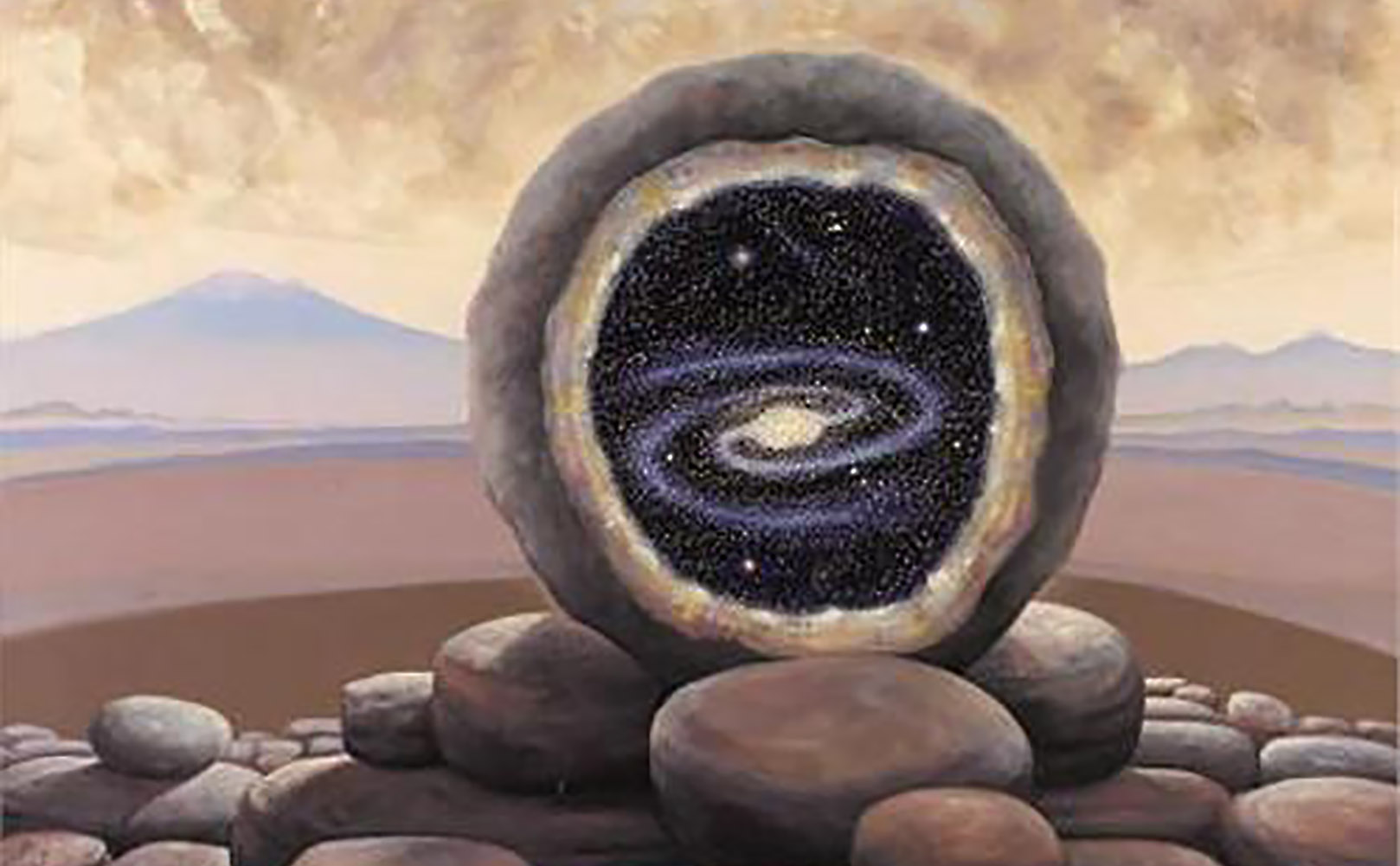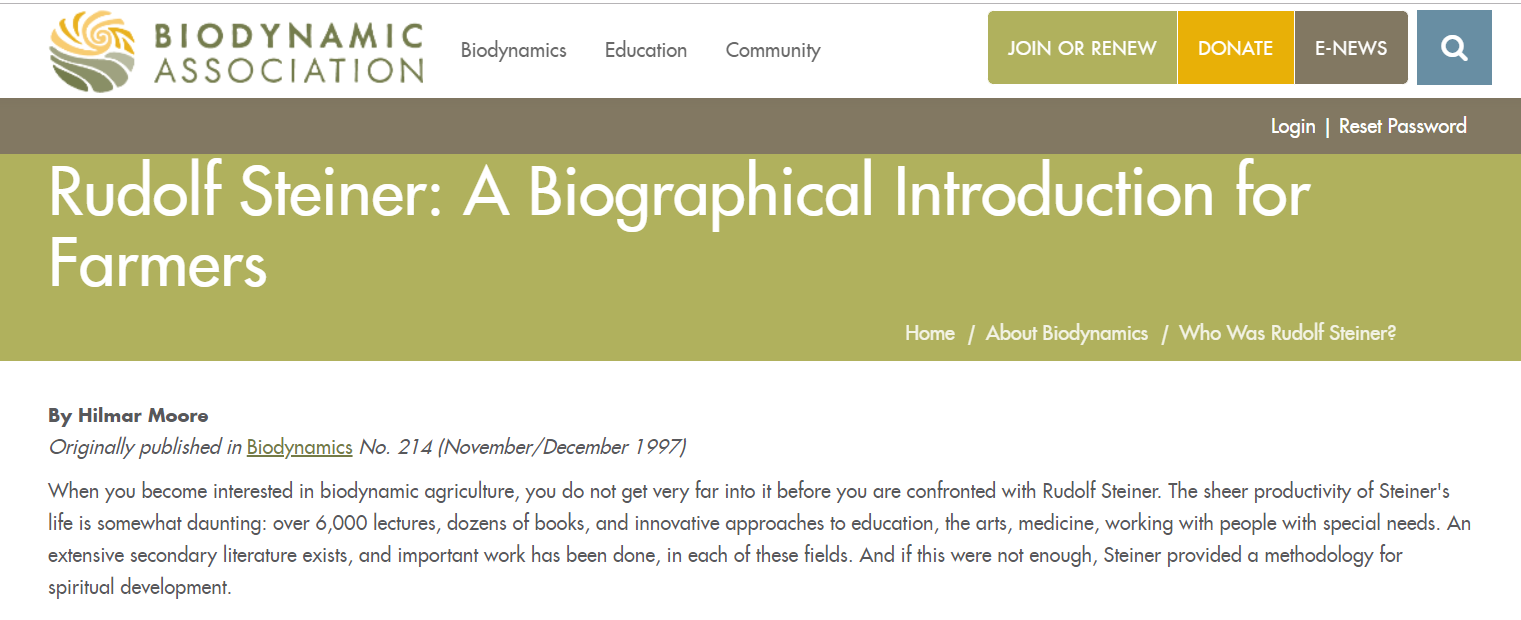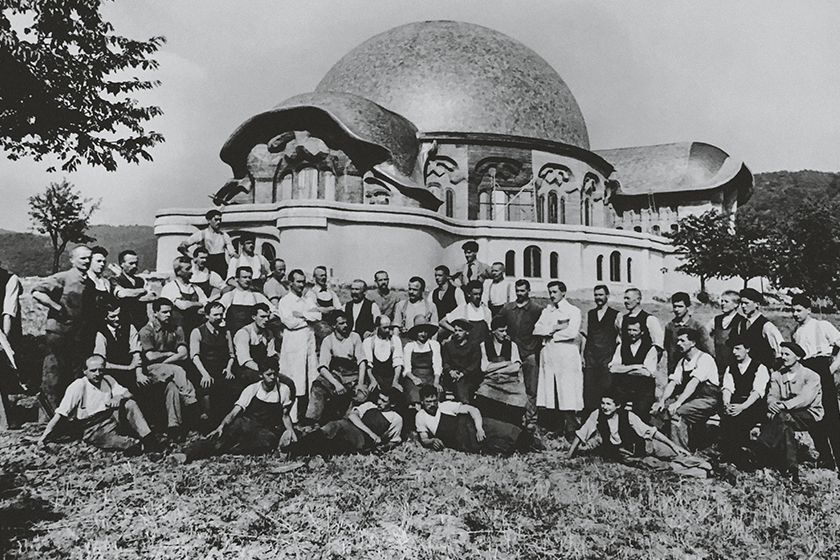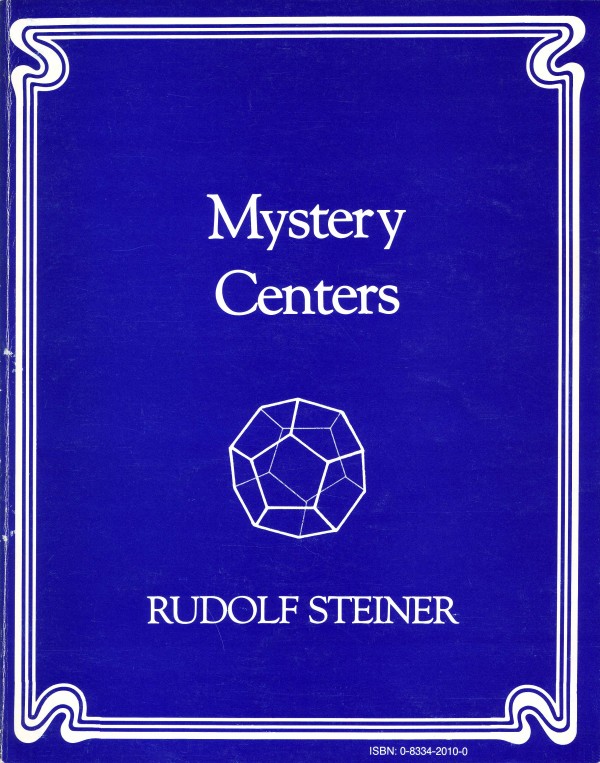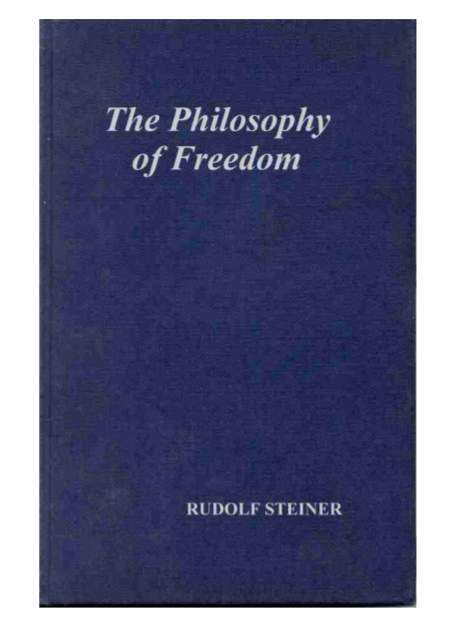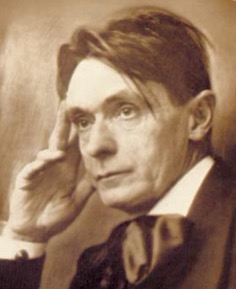THE TRANSFORMATION OF DREAM LIFE
Rudolf Steiner
An intimation that the student has reached or will soon reach the stage of development described in the preceding chapter will be found in the change which comes over his dream life. His dreams, hitherto confused and haphazard, now begin to assume a more regular character. Their pictures begin to succeed each other in sensible connection, like the thoughts and ideas of daily life. He can discern in them law, cause, and effect. The content, too, of his dreams is changed. While hitherto he discerned only reminiscences of daily life and transformed impressions of his surroundings or of his physical condition, there now appear before him pictures of a world he has hitherto not known. At first the general character of his dream life remains unchanged, in as far as dreams are distinguished from waking mental activity by the symbolical presentation of what they wish to express. No attentive observer of dream life can fail to detect this characteristic. For instance, a person may dream that he has caught some horrible creature, and he feels an unpleasant sensation in his hand. He wakes to discover that he is tightly grasping a corner of the blanket.
The truth is not presented to the mind, except through the medium of a symbolical image. A man may dream that he is flying from some pursuer and is stricken with fear. On waking, he finds that he has been suffering, during sleep, from palpitations of the heart. Disquieting dreams can also be traced to indigestible food. Occurrences in the immediate vicinity may also reflect themselves symbolically in dreams. The striking of a clock may evoke the picture of a troop of soldiers marching by to the beat of drums. A falling chair may be the occasion of a whole dream drama in which the sound of the fall is reproduced as the report of a gun, and so forth. The more regulated dreams of esoteric students whose etheric body has begun its development retain this symbolical method of expression, but they will cease merely to reflect reality connected with the physical body and physical environment. As the dreams due to the latter causes become more connected, they are mingled with similar pictures expressing things and events of another world. These are the first experiences lying beyond the range of waking consciousness.
Yet no true mystic will ever make his experiences in dreams the basis of any authoritative account of the higher world. Such dreams must be merely considered as providing the first hint of a higher development. Very soon and as a further result, the student’s dreams will no longer remain beyond the reach of intellectual guidance as heretofore, but on the contrary, will be mentally controlled and supervised like the impressions and conceptions of waking consciousness. The difference between dream and waking consciousness grows ever smaller. The dreamer remains awake in the fullest sense of the word during his dream life; that is, he is aware of his mastery and control over his own vivid mental activity.
During our dreams we are actually in a world other than that of our senses; but with undeveloped spiritual organs we can form none other than the confused conceptions of it described above. It is only in so far present for us as, for instance, the world of sense could be for a being equipped with no more than rudimentary eyes. That is why we can see nothing in this world but counterfeits and reflections of daily life. The latter are perceptible to us because our own soul paints its daily experiences in pictorial form into the substance of which that other world consists. It must be clearly understood that in addition to our ordinary conscious work-a-day life we lead a second, unconscious life in that other world. We engrave in it all our thoughts and perceptions. These tracings only become visible when the lotus flowers are developed. Now, in every human being there are slender rudiments of these lotus flowers. We cannot perceive by means of them during waking consciousness because the impressions made on them are very faint. We cannot see the stars during the daytime for a similar reason: their visibility is extinguished by the mighty glare of the sun. Thus, too, the faint spiritual impressions cannot make themselves felt in the face of the powerful impressions received through the senses.
Now, when the gate of the senses is closed during sleep, these other impressions begin to emerge confusedly, and the dreamer becomes aware of experiences in another world. But as already explained, these experiences consist at first merely of pictures engraved in the spiritual world by our mental activity attached to the physical senses. Only developed lotus flowers make it possible for manifestations not derived from the physical world to be imprinted in the same way. And then the etheric body, when developed, brings full knowledge concerning these engraved impressions derived from other worlds.
This is the beginning of life and activity in a new world, and at this point esoteric training must set the student a twofold task. To begin with, he must learn to take stock of everything he observes in his dreams, exactly as though he were awake. Then, if successful in this, he is led to make the same observations during ordinary waking consciousness. He will so train his attention and receptivity for these spiritual impressions that they need no longer vanish in the face of the physical impressions, but will always be at hand for him and reach him in addition to the others.
When the student has acquired this faculty there arises before his spiritual eyes something of the picture described in the preceding chapter, and he can henceforth discern all that the spiritual world contains as the cause of the physical world. Above all things he can perceive and gain knowledge of his own higher self in this world. The next task now confronting him is to grow, as it were, into this higher self, that is, really to regard it as his own true self and to act accordingly. He realizes ever more clearly and intensely that his physical body and what he hitherto called his “I” are merely the instruments of his higher self. He adopts an attitude toward his lower self such as a person limited to the world of the senses adopts toward some instrument or vehicle that serves him. No one includes as part of himself the vehicle in which he is traveling, even though he says: “I travel”; so, too, when an inwardly developed person says: “I go through the door,” his actual conception is: “I carry my body through the door.” Only this must become a natural concept for him, so that he never for a moment loses his firm footing in the physical world, or feels estranged from it. If the student is to avoid becoming a fantastic visionary he must not impoverish his life through his higher consciousness, but on the contrary, enrich it, as a person enriches his life by using the railway and not merely his legs to cover a certain distance.
When the student has thus raised himself to a life in the higher ego, or rather during his acquisition of the higher consciousness, he will learn how to stir to life the spiritual perceptive force in the organ of the heart and control it through the currents described in the foregoing chapter. This perceptive force is an element of higher sustainability, which proceeds from the organ in question and flows with beautiful radiance through the moving lotus flowers and the other channels of the developed etheric body. Thence it radiates outward into the surrounding spiritual world rendering it spiritually visible, just as the sunlight falling on the objects of the physical world renders them visible. How this perceptive force in the heart organ is created can only be gradually understood in the course of actual development.
It is only when this organ of perception can be sent through the etheric body and into the outer world, to illumine the objects there, that the actual spiritual world, as composed of objects and beings, can be clearly perceived. Thus it will be seen that complete consciousness of an object in the spiritual world is only possible when man himself casts upon it the spiritual light. Now, the ego which creates this organ of perception does not dwell within, but outside the physical body, as already shown. The heart organ is only the spot where the individual man kindles, from without, this spiritual light organ. Were the latter kindled elsewhere, the spiritual perceptions produced by it would have no connection with the physical world. But all higher spiritual realities must be related to the physical world, and man himself must act as a channel through which they flow into it. It is precisely through the heart organ that the higher ego governs the physical self, making it into its instrument.
Now, the feelings of an esoterically developed person toward the things of the spiritual world are very different from the feelings of the undeveloped person toward the things of the physical world. The latter feels himself to be at a particular place in the world of sense, and the surrounding objects to be external to him. The spiritually developed person feels himself to be united with, and as though in the interior of, the spiritual objects he perceives. He wanders, in fact, from place to place in spiritual space, and is therefore called the wanderer in the language of occult science. He has no home at first. Should he, however, remain a mere wanderer he would be unable to define any object in spiritual space. Just as objects and places in physical space are defined from a fixed point of departure, this, too, must be the case in the other world. He must seek out some place, thoroughly investigate it, and take spiritual possession of it. In this place he must establish his spiritual home and relate everything else to it.
In physical life, too, a person sees everything in terms of his physical home. Natives of Berlin and Paris will involuntarily describe London in a different way. And yet there is a difference between the spiritual and the physical home. We are born into the latter without our co-operation and instinctively absorb, during our childhood, a number of ideas by which everything is henceforth involuntarily colored. The student, however, himself founds his own spiritual home in full consciousness. His judgment, therefore, based on this spiritual home, is formed in the light of freedom. This founding of a spiritual home is called in the language of occult science the building of the hut.
Spiritual vision at this stage extends to the spiritual counterparts of the physical world, so far as these exist in the so-called astral world. There everything is found which in its nature is similar to human instincts, feelings, desires, and passions. For powers related to all these human characteristics are associated with all physical objects. A crystal, for instance, is cast in its form by powers which, seen from a higher standpoint, appear as an active human impulse. Similar forces drive the sap through the capillaries of the plant, cause the blossoms to unfold and the seed vessels to burst. To developed spiritual organs of perception all these forces appear gifted with form and color, just as the objects of the physical world have form and color for physical eyes. At this stage in his development the student sees not only the crystal and the plant, but also the spiritual forces mentioned above. Animal and human impulses are perceptible to him not only through their physical manifestation in the individual, but directly as objects; he perceives them just as he perceives tables and chairs in the physical world. The whole range of instincts, impulses, desires and passions, both of an animal and of a human being, constitute the astral cloud or aura in which the being is enveloped.
Furthermore, the clairvoyant can at this stage perceive things which are almost or entirely withheld from the senses. He can, for instance, tell the astral difference between a room full of low or of high-minded people. Not only the physical but also the spiritual atmosphere of a hospital differs from that of a ballroom. A commercial town has a different astral air from that of a university town. In the initial stages of clairvoyance this perceptive faculty is but slightly developed; its relation to the objects in question is similar to the relation of dream consciousness to waking consciousness in ordinary life; it will, however, become fully awakened at this stage as well.
The highest achievement of a clairvoyant who has attained the degree of vision described above is that in which the astral counter-effects of animal and human impulses and passions are revealed to him. A loving action is accompanied by quite a different astral concomitant from one inspired by hate. Senseless desire gives rise to an ugly astral counterpart, while a feeling evoked by a high ideal creates one that is beautiful. These astral images are but faintly perceptible during physical life, for their strength is diminished by life in the physical world. The desire for an object, for example, produces a counterpart of this sort in addition to the semblance of the desire itself in the astral world. If, however, the object be attained and the desire satisfied, or if, at any rate, the possibility of satisfaction is forthcoming, the corresponding image will show but faintly. It only attains its full force after the death of the individual human being, when the soul in accordance with her nature still harbors such desires, but can no longer satisfy them, because the object and the physical organ are both lacking.
The gourmand, for instance, will still retain, after death, the desire to please his palate; but there is no possibility of satisfying this desire because he no longer has a palate. As a result, the desire produces an especially powerful counterpart, by which the soul is tormented. These experiences evoked by the counterparts of the lower soul-nature after death are called the experiences in the soul-world, especially in the region of desires. They only vanish when the soul has purified herself from all desires inclining toward the physical world. Then only does the soul mount to the higher regions, to the world of spirit. Even though these images are faint during life in the physical world, they are none the less present, following man as his world of desire, in the way a comet is followed by its tail. They can be seen by a clairvoyant at the requisite stage of development.
Such and similar experiences fill the life of the student during the period described above. He cannot attain higher spiritual experience at this stage of development, but must climb still higher from this point.
